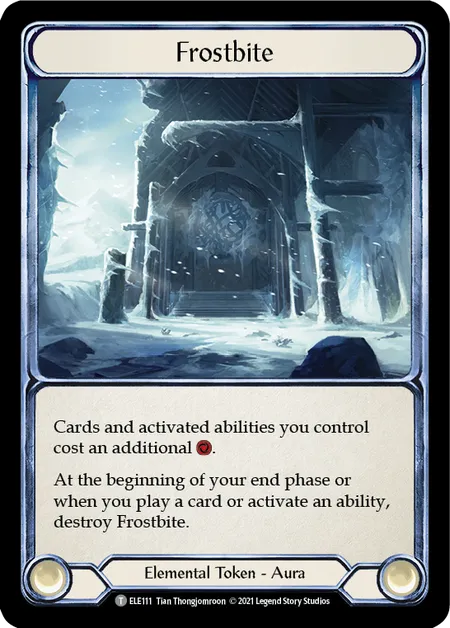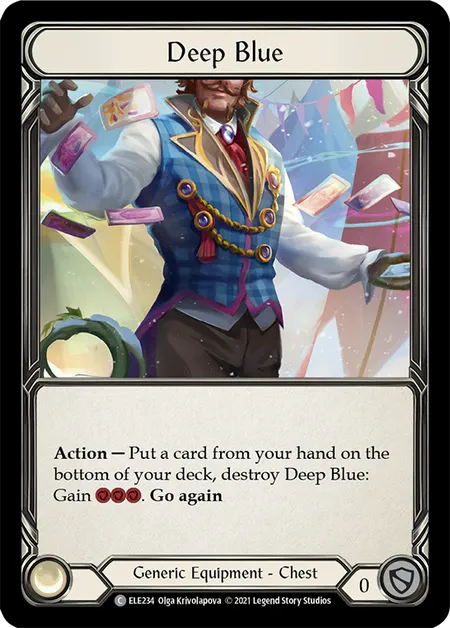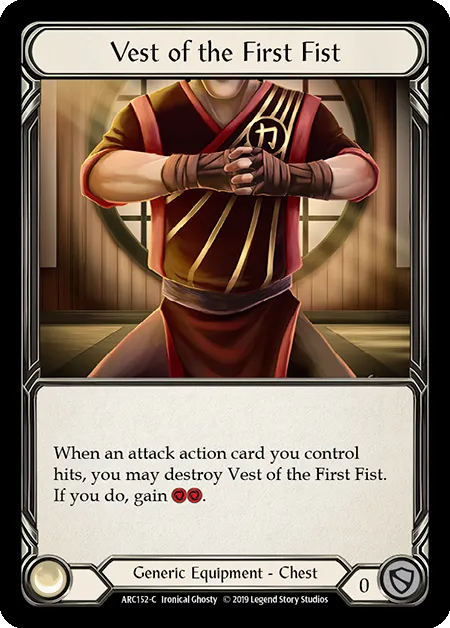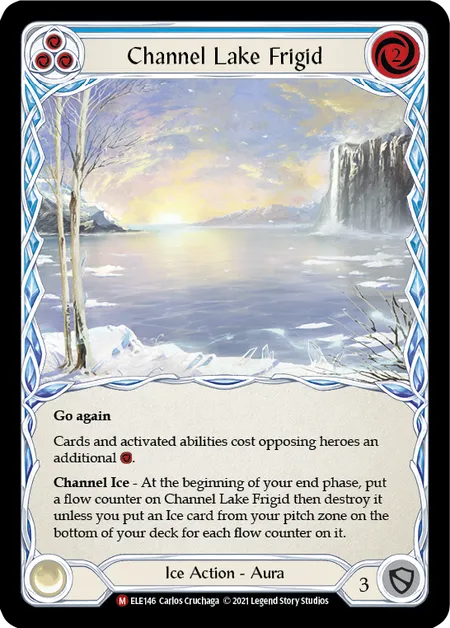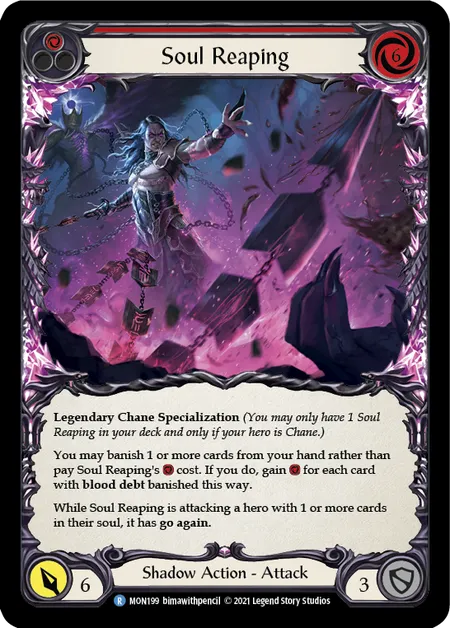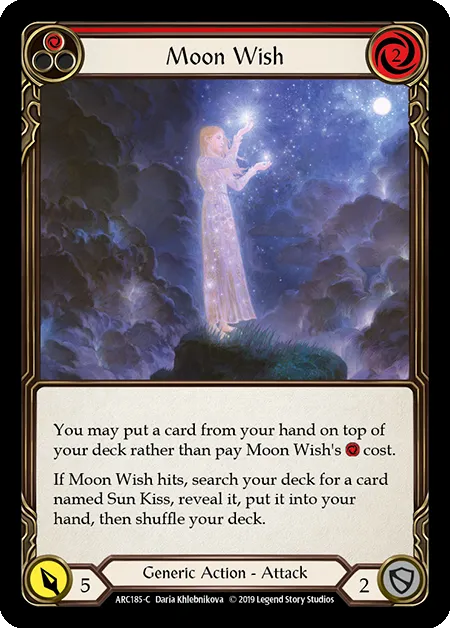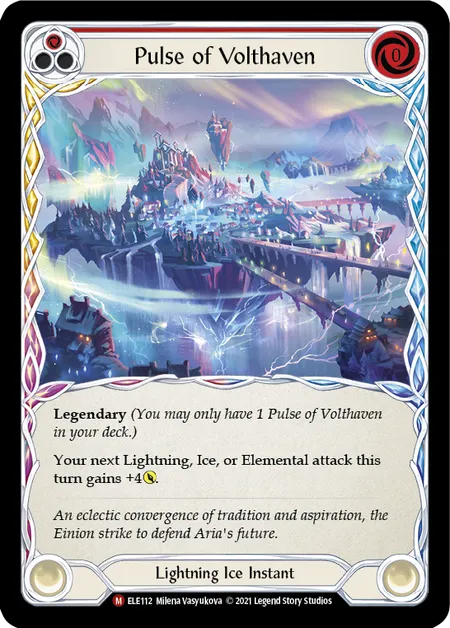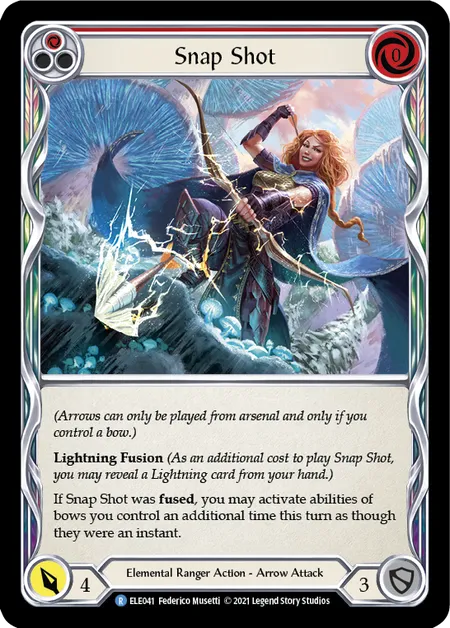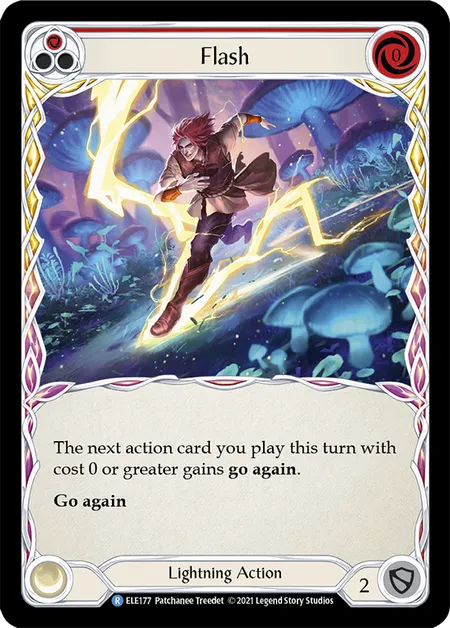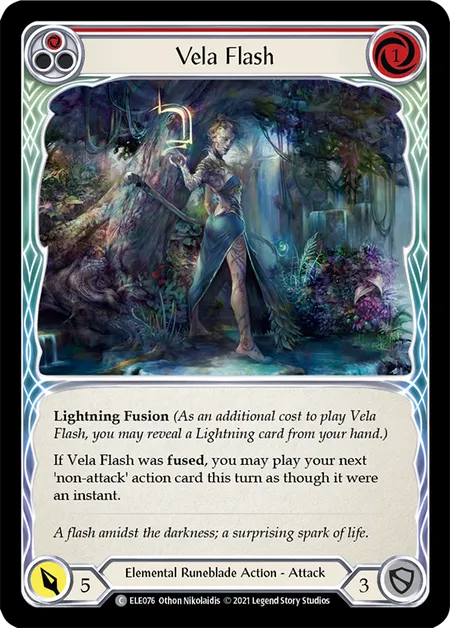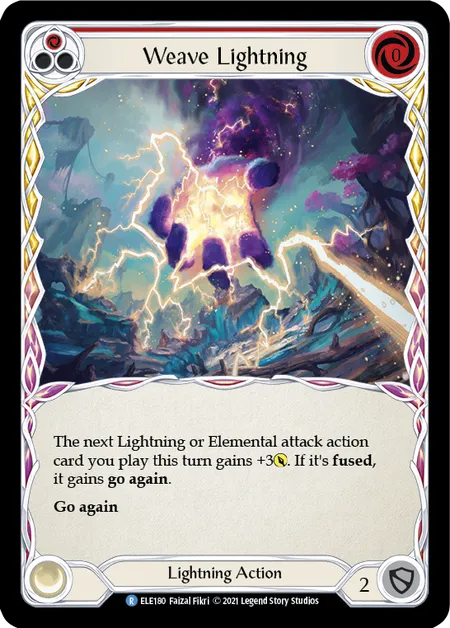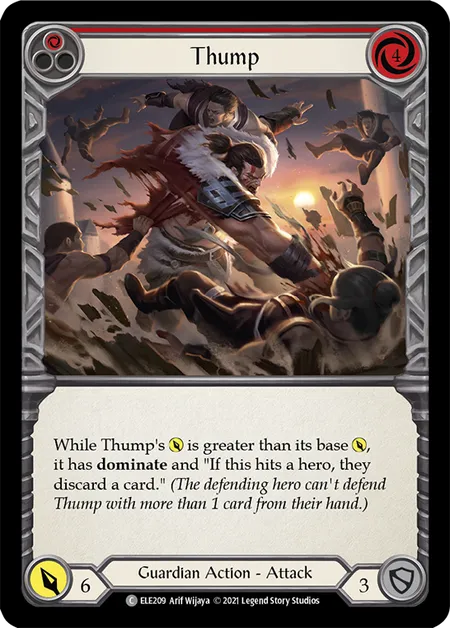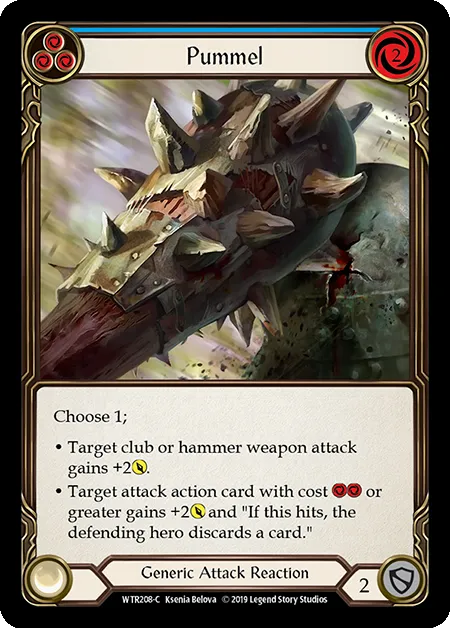Legend Story Studios’ Rules and Policy Manager, Joshua Scott is here to break down some of the most talked about rules interactions Tales of Aria has brought us.
Skirmish season 3 runs from November 13 through to December 5, so what better time than now to address a few frequently discussed rules interactions from Tales of Aria (and beyond)! Frostbite is the center of much discussion this week, as well as "alternate costs", "fusing and revealing" "interactions between instants, action points and go again" and Thump. Get schooled up for Skirmish, The Calling, National Championships and beyond with these commonly discussed rules queries and confusions.
Please note that some questions in this Rules Reprise article might be outdated.
Always check the Comprehensive Rules, and Tournament Rules and Policy, for the most up-to-date rulings.
If I’m affected by Frostbite (token) can I still activate Fyendal’s Spring Tunic?
Yes, but as with all activated abilities, you still pay the cost for activation before it generates any effects. For Fyendal’s Spring Tunic (with a Frostbite token), this means paying a cost of 1 resource before you would gain the 1 resource from activating the ability. The same applies to other activated abilities that gain you resources, such as Deep Blue and Blood Drop Brocade.
However, triggered abilities (e.g. Vest of the First Fist) and replacement effects (e.g. Vestige of Sol) are not affected by Frostbite tokens or cards with similar effects (e.g. Channel Lake Frigid). This is because they are neither cards that are played, nor activated abilities, and thus do not have a cost to pay to trigger or to replace an event.
Tyler controls Deep Blue and two (2) Frostbite tokens. Tyler announces the activation of Deep Blue’s ability. To pay for the activation of the ability, Tyler must pay 2 resources due to the effect of the Frostbite tokens under their control, and put a card from their hand to the bottom of their deck. Tyler pitches a blue card to pay the resource cost and has 1 resource remaining. When Deep Blue’s ability resolves, Tyler gains 3 resources. In summary, Tyler has pitched a blue card, put a card from their hand to the bottom of the deck, and destroyed Deep Blue; now they have a total of 4 resources.
Tyler controls Vest of the First Fist and Perry controls Channel Lake Frigid. Tyler attacks Perry with Head Jab, pitching a red card to pay the additional resource cost from Channel Lake Frigid. Perry does not defend or prevent any damage, the Head Jab hits, and Tyler’s Vest of the First Fist triggers. Tyler does not have to pay any additional resource costs to trigger or resolve this ability. When the Vest of the First Fist’s trigger resolves, Tyler chooses to destroy it and gain 2 resources. In summary, Tyler pitched a red card to play Head Jab, then destroyed Vest of the First Fist; now they have a total of 2 resources.
Do I have to pay for Frostbite (token) if I play Soul Reaping and choose the alternative cost?
Yes. When you select an alternative cost for a card, the resource cost to pay becomes zero BEFORE increases and decreases apply. This means that if you control a Frostbite token, or are subjected to a similar effect, then you will typically still have to pay the resource costs for a card with an alternative cost. When you choose the alternative cost, the resource cost to play the card becomes 0 (the base cost does not change), and then that resource cost is increased by the effect of Frostbite. Additionally, the resources from banishing "blood debt" cards with the alternative cost are not gained until after the Soul Reaping has been played, and therefore can not be used to pay the resources costs to play Soul Reaping itself.
Tyler controls a Frostbite Token. Tyler announces Soul Reaping targeting Perry and choosing to pay the alternative cost of banishing a card. Because of the alternative cost, the resource cost to play Soul Reaping starts at 0, and is then increased to 1 from Frostbite’s effect. Tyler pitches red card to pay this resource cost. Then Tyler banishes a “blood debt” card from their hand to pay the alternative cost, and finish playing the card. Soul Reaping is on layer 1 and the triggered ability of the Soul Reaping’s alternative cost is on layer 2. When layer 2 resolves, Tyler will gain 1 resource for banishing a card with “blood debt”.
Can I reveal Pulse of Volthaven to fuse an attack, then play it to affect that attack?
No. The key here is the wording of Pulse of Volthaven’s effect. “Your next [...] attack this turn [...]” is an effect that applies to the next attack action card you play or attack ability you activate. If you have used Pulse of Volthaven to fuse an attack action card, it has already been considered played, BEFORE you can play and resolve Pulse of Volthaven as an instant. This means if you use Pulse of Volthaven to fuse an attack, then play Pulse of Volthaven and resolve its effect, the Pulse of Volthaven will not affect the current attack, but will affect the NEXT attack that turn.
Tyler attacks Perry with Dazzling Crescendo (red), fusing with Pulse of Volthaven. At this time Dazzling Crescendo is recognized as an attack on layer 1. Before passing priority, Tyler plays Pulse of Volthaven, which becomes layer 2. Tyler and Perry pass priority and layer 2 (Pulse of Volthaven) resolves. The power of the Dazzling Crescendo is still 4, because it was played before Pulse of Volthaven resolved and its effect came into play. The chain link resolves and Tyler attacks Perry with Snap Shot (red), without fusing a card. The power of Snap Shot is 8, because it was played after Pulse of Volthaven resolved and meets the condition of the effect.
If I play Vela Flash with go again, and fuse it, then play a non-attack action card with go again, do I have 2 action points?
Yes. To examine this, let’s break it down. “Go again” is an ability keyword on a card (or activated ability) that gives the controlling player an action point when it resolves as a layer (or for attacks, when the chain link resolves). In addition, “go again” does not stack, meaning that when a card has “go again” it can not gain another instance of “go again”. Typically, when you play an action card with “go again”, you spend an action point to play that card, then gain an action point when it resolves. However, when you play an action card as an instant you do not spend an action point to play it, but you still gain an action point if that card has “go again” - this nets you 1 action point.
In the case of Vela Flash, you’ve given Vela Flash “go again”, spending 1 action point to play it and gaining 1 action point when the chain link resolves. When you play the non-attack action card with “go again”, you’re not spending an action point, but you will still gain 1 action point when it resolves, netting you 1 action point. This means you will have 2 action points.
Tyler starts with 1 action point. Tyler plays and resolves Flash (red). Tyler then attacks Perry with Vela Flash, fusing a Lightning card and spending 1 action point. Vela Flash gains “go again” from Flash. The chain link resolves and Tyler gains 1 action point from Vela Flash’s “go again”. Tyler plays Weave Lightning as an instant (from Vela Flash’s effect). Tyler still has 1 action point because they did not spend it playing Weave Lightning. The Weave Lightning resolves and Tyler gains 1 action point from its “go again”. Tyler now has 2 action points.
I play Thump, my opponent defends with two cards, and then I play Pummel. Can my opponent play a defense reaction?
Yes, but only before Pummel resolves. Thump only has “dominate” if its power is greater than its base power, as part of its conditional continuous effect. Pummel only increases Thump’s power when it resolves as a layer, NOT when it is played. To resolve Pummel, you must pass priority to the opponent giving them the opportunity to play and resolve a defense reaction before your Pummel resolves. However, once Pummel resolves, Thump will have “dominate” and that will prevent the defending player from playing any additional defense reactions from hand to the chain link.
In addition, when Thump gains “dominate”, nothing will happen to any of the existing defending cards, even if there is more than one that was declared from hand. “Dominate” only prevents additional defending cards from hand being added to the chain link; it does not remove, destroy, or return any of the existing defending cards.
Tyler attacks Perry with Thump. Perry defends with two (2) cards from hand. During the reaction step, Tyler plays Pummel (layer 2) and passes priority, hoping to resolve it. Thump does not currently have “dominate” so Perry plays Sink Below (layer 3) from hand and passes priority back to Tyler. Tyler doesn’t have anything left to play so they pass priority and layer 3 resolves, making Sink Below a defending card. Both players pass priority again and layer 2 resolves, increasing the power of Thump, thus giving it “dominate”. It is now that Perry can no longer play any additional defense reaction cards from hand.
